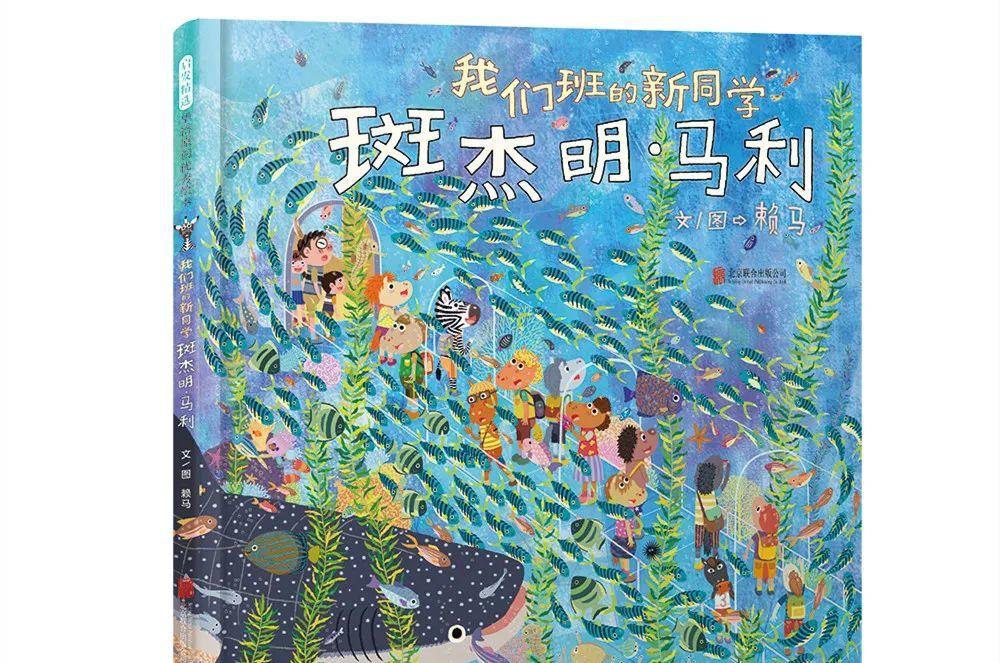In life, we will meet many people who "look" different from us, they may be from different cities from us; they may speak dialects that we cannot understand; they may be physically handicapped and inconvenient to move; they may be from different countries and have different cultural habits with us; or even just because we are different individuals, we will have different looks, different preferences, different advantages and disadvantages...
For each of us, understanding and accepting the difference is not only the greatest act of kindness to others, but also the only way for us to integrate into a colorful world and have an open mind.
So, how do we cultivate empathy in our children and guide them to understand and accept the differences of others?
LaiMa's new book, "Our Class's New Classmate Banjamin Marley", cuts to this problem and provides an effective way to guide.

It's a pony school, and today, our class transferred a new classmate, Banjamin Marley.
When Banjamin Marley hid behind the teacher and walked into the class, the classmates all looked at him, and they found that Banjamin looked different from everyone else.
It is very abstract for us to talk directly to our children about the importance of accepting others' differences.
True understanding and inclusion comes from experiencing and interacting with each other in real life.
The more children see that "they are like this," it is easier to open their hearts and sincerely accept others, after all, people are eager to gain some kind of recognition through people who are similar to themselves.
We took classes with Banjamin and learned about horses together.
We play together.
We had lunch together.
Together, we dress up as a variety of characters.
We finish school together.
……
When everyone and BanJamin have more and more common experiences, each student has a different understanding.
Mabebe found that Banjamin also liked to dig his nostrils, just like her.
Maddor discovered that Banjamin didn't like to eat green peppers either, just like her.
Ma Xiaoxi found that Banjamin could not sleep at noon, just like him.
Maguagua found that Banjamin was also missing two front teeth, just like him.
Ma Xiaodi found that Ban Jieming, like Ma Lele, spoke in a small voice.
Through these daily life together, the similarities between Banjamin and everyone under different appearances are shown little by little.
The students of Pony School are also increasingly aware that they and Banjamin have much more in common than differences, "it turns out that we are all the same, but we look a little different."
Since that day, we have one more classmate in our class, Banjamin, and each of us has an additional friend Banjamin.
Lai Ma's picture books always have interesting points that cannot be finished, and I believe that this point is deeply experienced by young readers.
This new book also continues his usual creative style, the book contains a number of interesting details, almost every spread has a cleverly conceived small task, you can read the story, while taking the child to find, so that parent-child reading is more interesting.
For example, when reading, you can take your child to watch games in a stereotype and colloquialism.
You can take your child to learn simple and easy-to-understand hygiene knowledge.
You can sing fun nursery rhymes with your child.
If a child reads a lot of Laima's works, he will also be very interested in finding picture book characters and stories that he has read in the book, and looking for hidden authors and family members.
You can also look at the list of the whole class at the back cover and find the corresponding ponies one by one in the inner text.
Wait, I heard that the pony class is going to have a new classmate again, she looks a little different...
What's next for our class? Let's take the kids and imagine it boldly!
The book is based on the experiences of his family's three children adapting to their new environment as transfer students after moving from Taitung to Taipei.
When his son Ah Gu chatted with his mother, he would always talk about other transfer students in the class, such as a new classmate who was very popular, and everyone liked to play with him... Listening to it, Laima gradually came up with the idea of creating a story.
He took his son Agu as the prototype of the story, and then integrated the funny characteristics of Agu into the character of the protagonist of the story, and then referred to various school anecdotes shared by the children, and finally wrote this story about the transfer student Banjamin Marley, hoping to let the children understand and accept people who are different from themselves.
As long as they live in groups, children inevitably learn to get along with others, and in the process of growing up, they also experience socialized learning, and they must learn to understand and accept those who are the same and different from others. No one is born with prejudice and discrimination, and various classical psychological experiments have repeatedly demonstrated this truth.
I believe that this story created from the author's own parenting experience will surely resonate deeply with parents and children.
Accepting others is also accepting ourselves, let us and our children open our hearts and embrace this diverse and beautiful world!